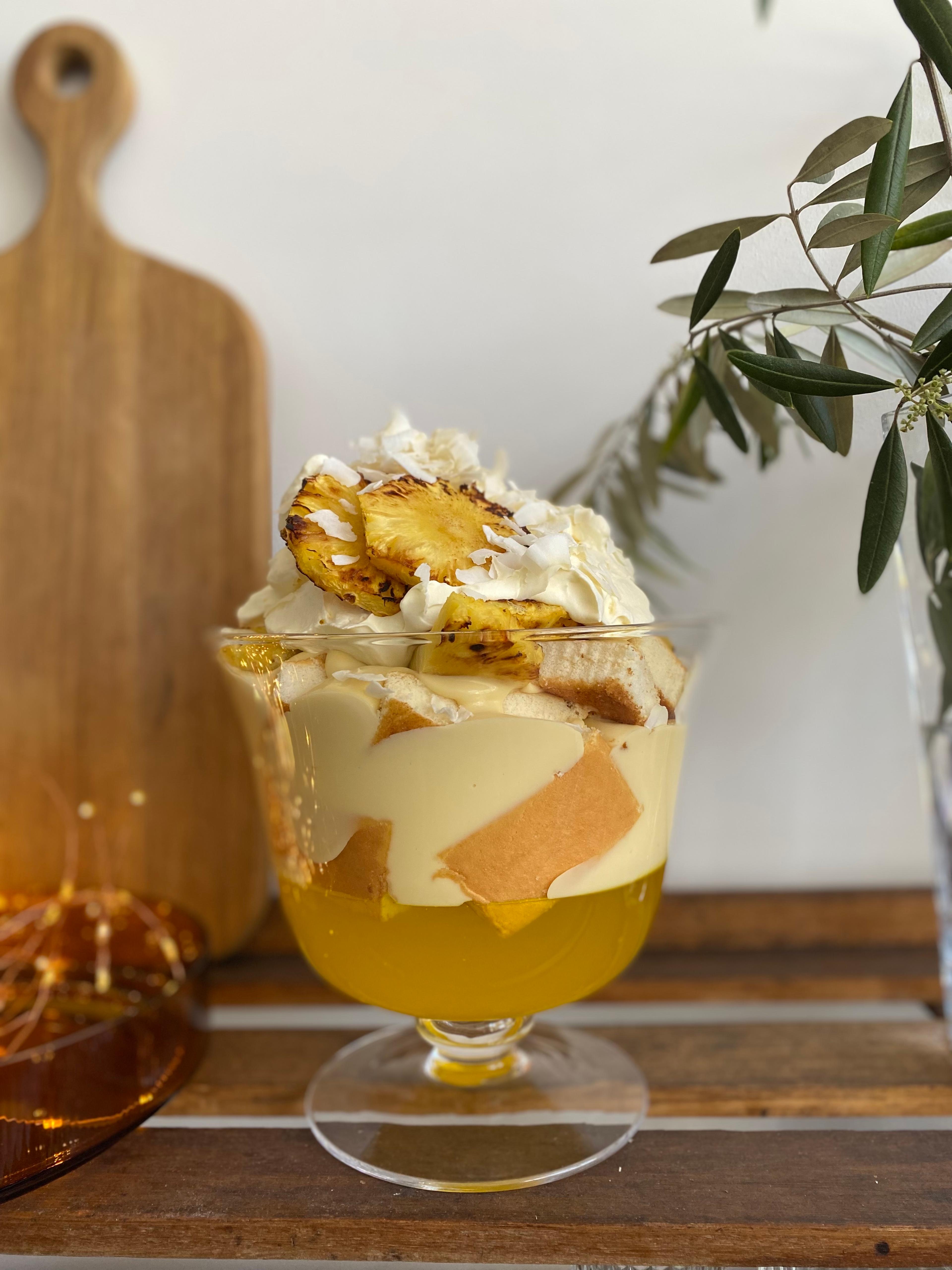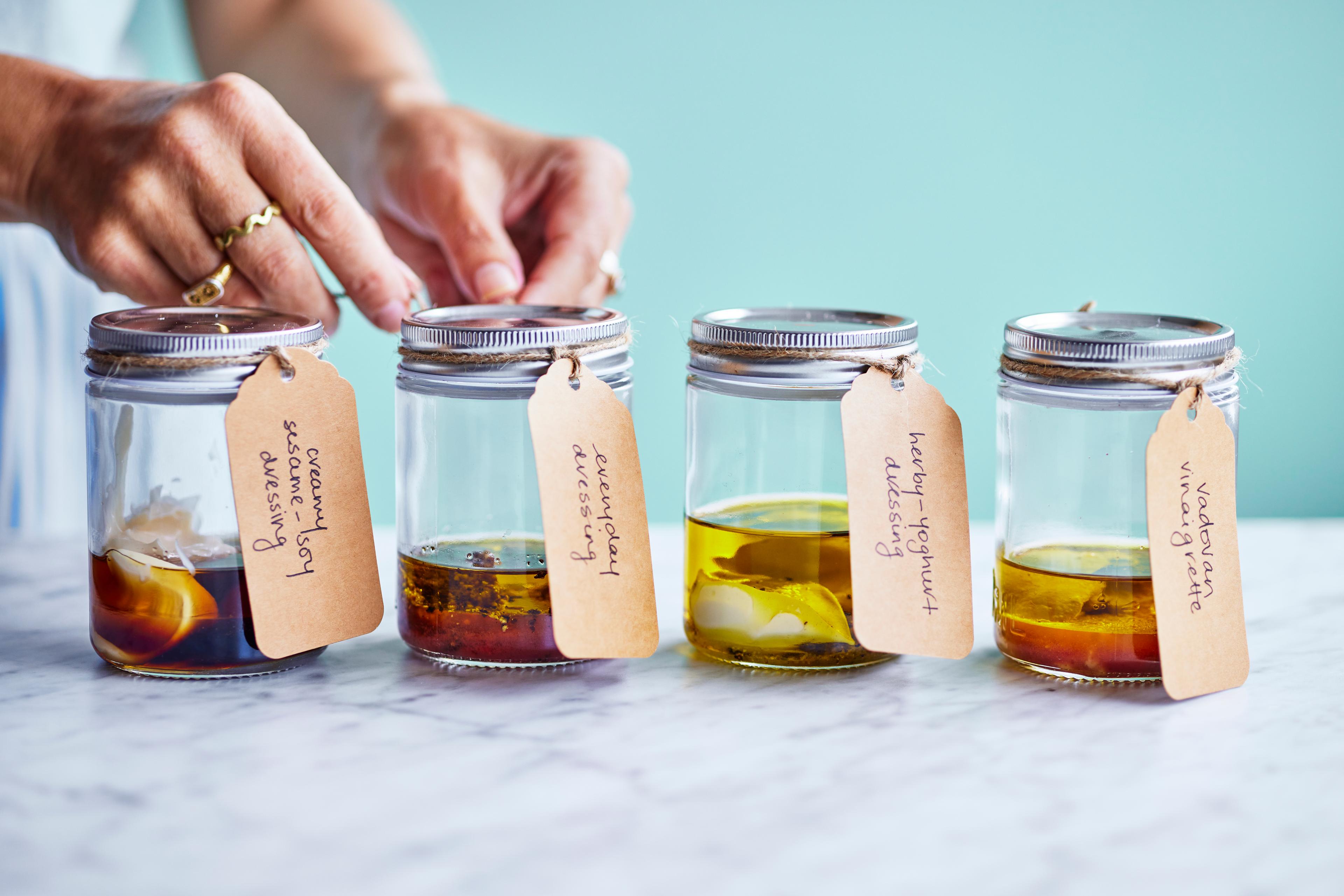
Your Ultimate Guide to Making the Best Salad Dressing at Any Table.
It’s the season of the tossed leaf and we are here to make an impassioned stand on behalf of salad. Because, despite what they say, you absolutely can win friends with salad.
We’re going to tell you how to do it. It’s not a big secret, really, but you’d be surprised how overlooked this element of salad-making is. So, listen, the dressing is the thing. And let us tell you here and now, it’swhat delivers the wow.
To make an influential salad dressing that will win people over to your side, you need an ensemble cast of oil, acid and seasoning. From there, you bring in the supporting actors, which may include additional seasonings in the form of garlic and shallots, soft herbs and citrus, maybe even spice.
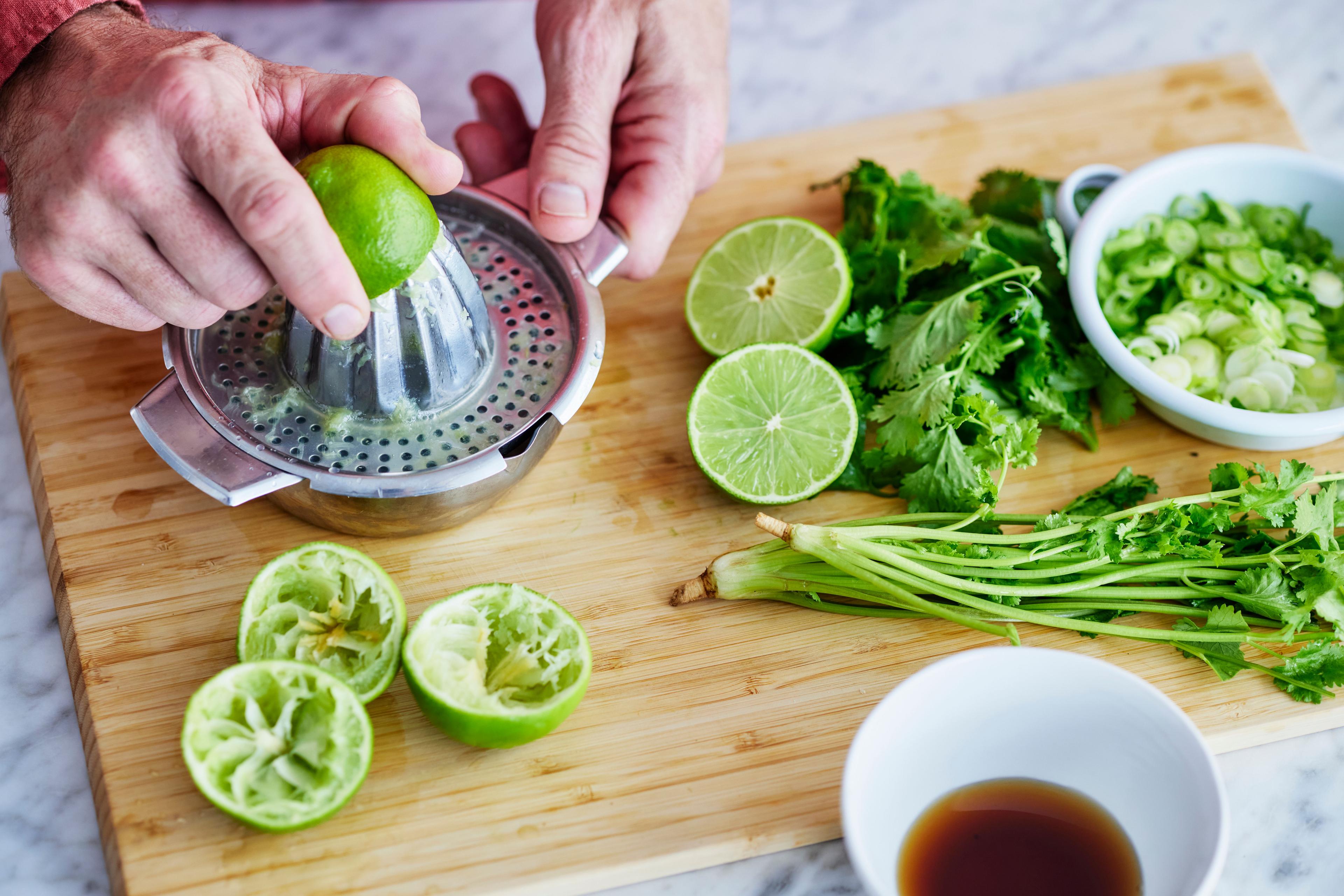
Let’s break it down
Oils:
Look for good-quality oils, such as extra-virgin olive oil (EVOO), avocado oil or macadamia oil. Oil is the foundation of your dressing, so you need it to be a good one. Avoid bland oils that don’t add a lot, such as sunflower and canola oils.
Acid:
Ever tasted a dressing that just had no pizazz? It probably didn’t have any acid. Acidity brings the balance and when you think about the earthy flavours a lot of salads are made up of, it makes sense you would need to liven it up with either a good vinegar or citrus. Stock the pantry with red- and white-wine vinegars, balsamic vinegar, rice wine vinegar and chinkiang (or Chinese black vinegar) and mix up depending on the style of salad you’re tossing.
Seasonings:
Yes, a salad dressing can be just oil and acid and done, but if you have an extra 2 minutes, elevate here with seasonings. Don’t go too crazy, though, you need to season within reason. For example, if you have a South East Asian-style slaw to dress, don’t go putting Vadouvan curry powder in the mix.
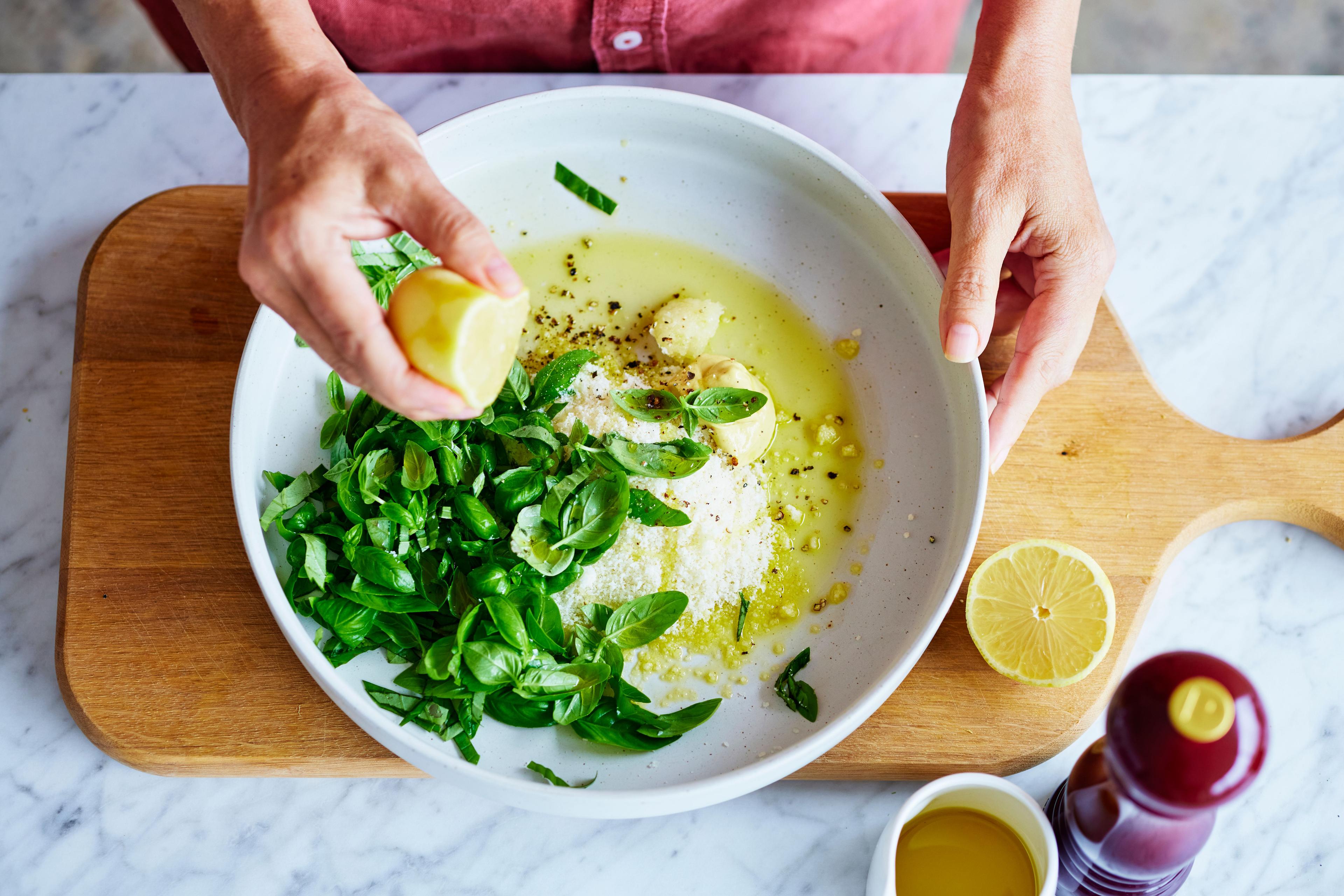
A seasoning for all seasons:
For bistro-style salads try mustard (especially Dijon) and honey.
For Asian-style salads try sesame oil, miso, tamari/soy sauce, sesame oil, chilli.
For adding punch try garlic and/or shallot. Take note, less is more here. You could finely grate garlic into a dressing or fry lightly in oil.
For a herby addition try soft herbs such as chives, tarragon, dill and coriander.
For extra zest, tryadding the citrus zest as well as the juice.
For aroma, add a pinch of spice from curry powders (see our dressing with the Vadouvan curry mix), cumin for a Mexican beat or sumac and za’atar for a Middle Eastern spin.
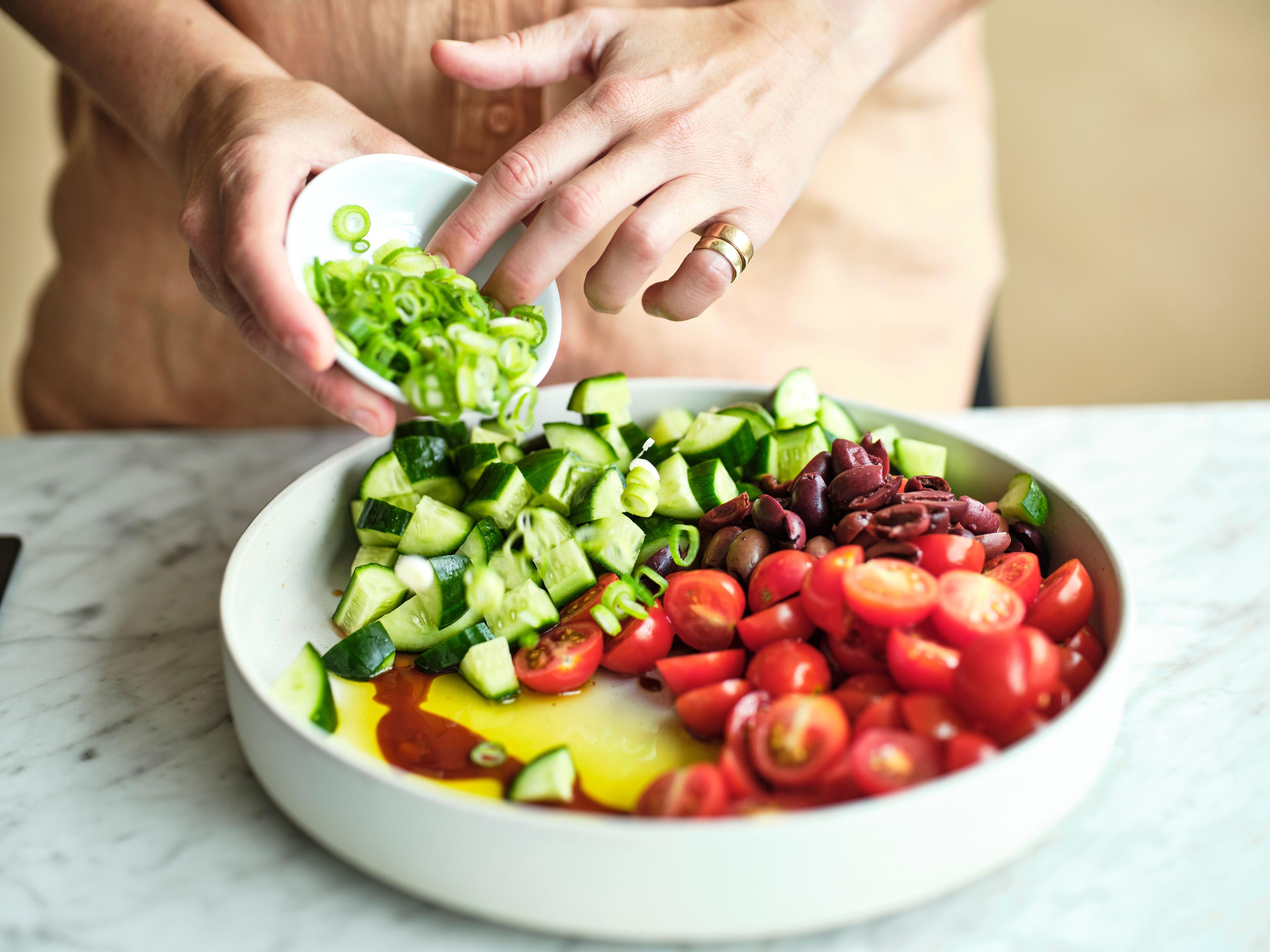
Altogether now
With the basics nailed you’re off to a winning start, but you don’t yet have a salad dressing sexy enough to make headlines. That all comes down to the right proportions. So let’s really heat things up by talking about ratios.
A good ratio for oil to vinegar is widely regarded to be 3:1. That’s 3 parts oil to 1 part vinegar. But let’s be clear here, everyone’s palate is particular to them, so if you feel you need tweaks, go for it. Always taste your dressing and adjust accordingly. You might need a touch more sugar, a little spice or to smooth things out with more oil.
Basic seasoning is pretty important because it unifies your dressing and ultimately your whole salad. Salt, pepper and sugar bring out the flavours of your salad ingredients and add balance.
Mixing it up
Is there a right way to mix? Not entirely, you just need to make sure the dressing doesn’t split, which is what happens without emulsification. More on that in a sec.
Here are some mixing methods:
· The jar with lid method is fairly straightforward, just add ingredients and shake
· The pro method requires you to add the salt to the vinegar first for it to better dissolve then whisk in the oil gradually.
· The romantic French method begins with wooden salad bowl (preferably walnut wood) that is rubbed with a crushed garlic clove (discard the garlic) before the dressing is whisked in.
What about cream?
Creamy based dressings go well with more robust leaves or root veg-heavy salads. If you’re after a creamy dressing, try to choose a base that won’t overwhelm or overly sweeten your salad.
Good dairy bases include yoghurt, buttermilk, crème fraiche and aioli.
Non-dairy options are tahini, cold water and lemon juice or aqua faba.
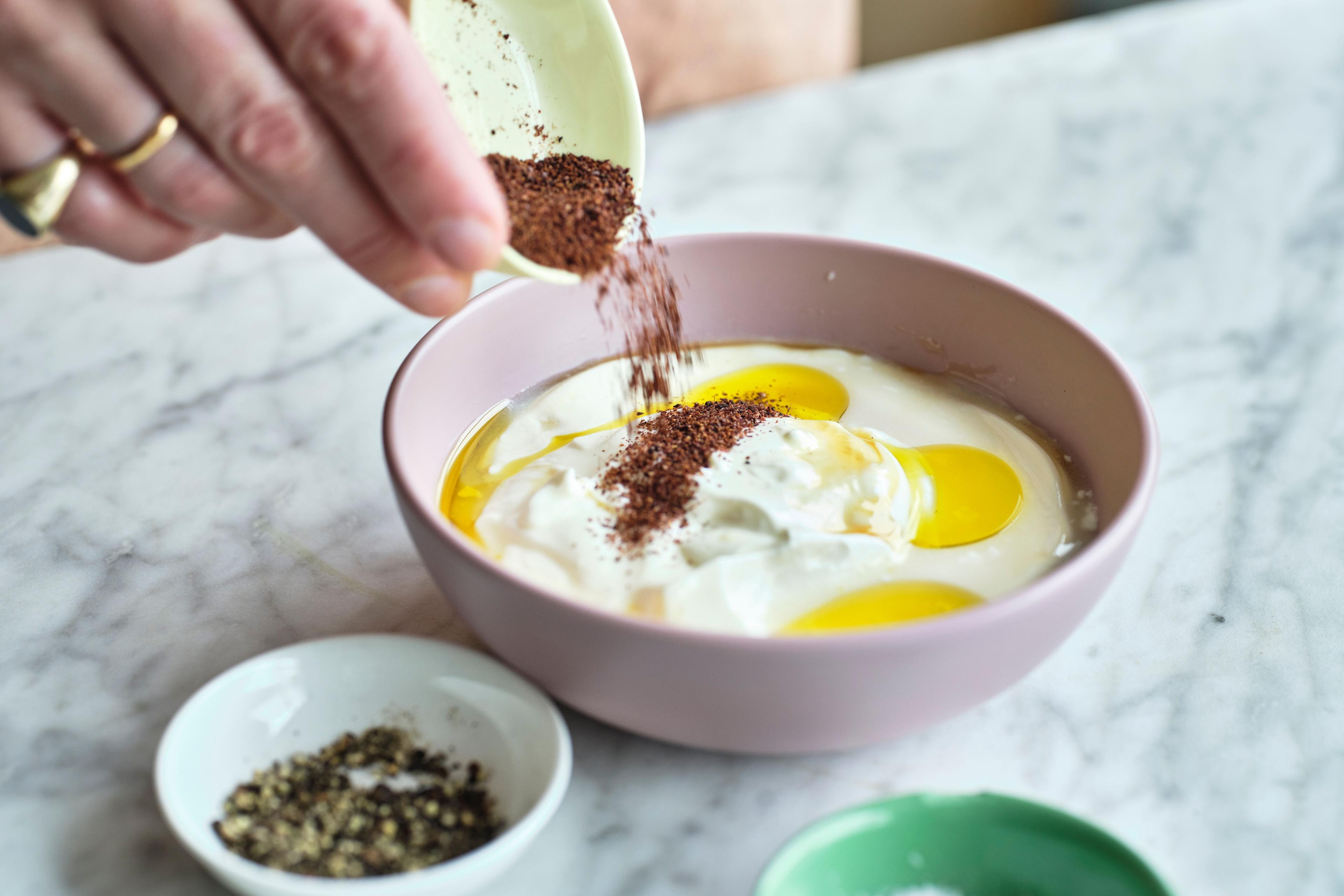
A word on emulsification
If we walked away from high school science with any knowledge at all, it’s that oil and water don’t mix (in this case oil and vinegar). So to create a well-formed salad dressing you can employ emulsification. The most common emulsifiers in your kitchen are egg, mayo, mustard, honey and tomato paste, which can be whisked in to hold everything together. Whisk a little emulsifier in until no oil can be seen on the surface, then add your seasonings. Butyou don’t have to use an emulsifier, brute force will also work, as will just adding the oil slowly as you whisk.
How long will my dressing last?
That all depends on what’s in it. Dressings with fresh ingredients should be consumed within 3–4 days. Vinaigrettes can last up to 2 weeks if they have shelf-stable ingredients. Meanwhile, creamy dressings shouldn’t live beyond 3–4 days.
Store your dressing in the fridge. EVOO dressings may go cloudy, but that’s fine.It will thin out again at room temperature.
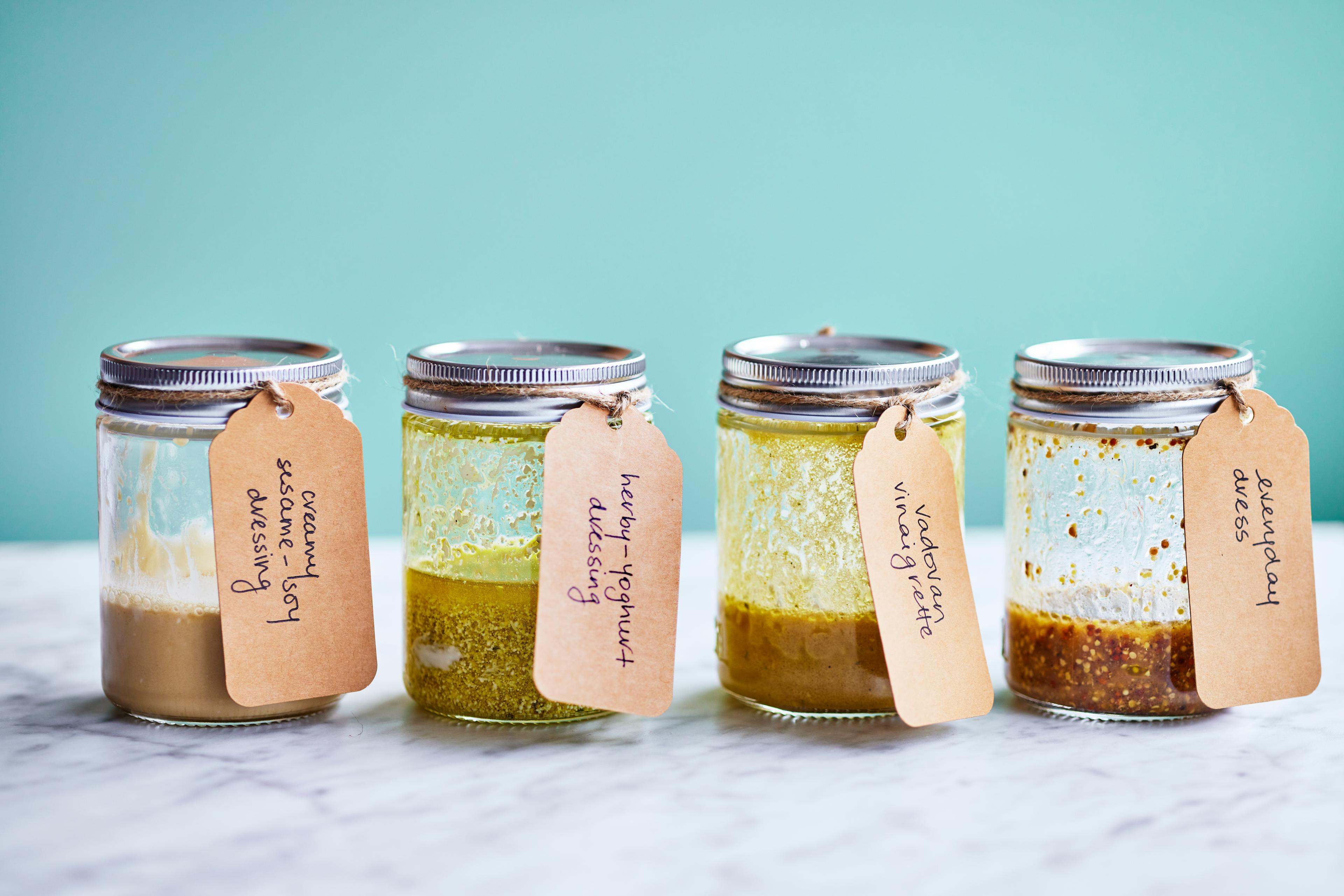
Get started on your dressing repertoire with our easy recipes:
Vadouvan Vinaigrette
2 tsp Dijon mustard
2 tsp red wine vinegar
1 tbs EVOO
½ tsp Vadouvan curry blend
Everyday Salad Dressing
1 tbs red wine vinegar, apple cider vinegar or rice wine vinegar
1 tbs wholegrain mustard
2 tbs olive oil
Creamy Sesame Soy Dressing
2 tsp soy sauce
2 tsp rice wine vinegar or white vinegar
2 tsp sesame oil
2 tbs aioli or mayonnaise
½ tsp sugar
Herby Yoghurt Dressing
1 tsp garlic and herb mix
1 tbs greek style yoghurt
1 tbs lemon juice
2 tbs olive oil
Shake any of the above blends in a jar and pour over your favourite leaves to enjoy x


